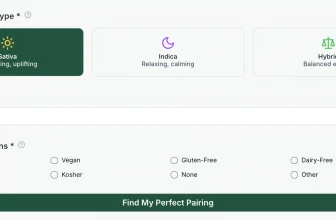
What is medical marijuana? The simple answer is that medical marijuana is cannabis also know as weed, pot or marijuana, that is used as medicine to treat illness. However, with its extensive possibilities and multifaceted use, medical marijuana represents an opportunity for many people, both in the medical field and as ordinary consumers. Therapeutic effects of the cannabis plant have been used for thousands of years, evolving in what’s now known as Siberia and Mongolia. In fact, marijuana is the world’s oldest cultivated crop. Researchers even discovered cannabis seeds in the remains of Viking ships from the ninth century. When was the last time you found seeds in an old boat? I guess you can say marijuana is old AF, and it’s here to stay.
First, it’s important to differentiate between the two main components of marijuana – THC, and CBD. Or in other words, psychoactive marijuana and non-psychoactive hemp. In this article, we’re going to be talking about marijuana and its medicinal properties and uses.
The Early Days of Weed in America
When cannabis reached America in the early 20th century, it first arrived in the southwest during the Mexican Revolution of 1910-1911. Utah was the first state to outlaw marijuana in 1915, and by 1931 the head honchos labeled it illegal in 29 states, with American laws never differentiating between the marijuana plant and the hemp plant.
In 1937, marijuana was criminalized across the United States. I guess Americans were too busy watching the Hindenburg explode and searching for Amelia Earhart. In any case, that brings us to today. As of May 2021, 36 states allow for the medical use of cannabis products.

What Is Medical Cannabis?
Consumers use medical marijuana to treat or alleviate a complaint, symptom, or illness rather than for pleasure. In this sense, any strain of cannabis that contains an adequate amount of active cannabinoids can be considered medicinal cannabis when used for that purpose. The critical, medically effective component of medical marijuana is delta-9-tetrahydrocannabinol, aka THC.
THC is the primary psychoactive cannabinoid molecule in marijuana, which is what causes tokers and smokers to feel high. THC triggers a feeling of intoxication has a muscle-relaxing effect and helps against nausea and pain.
How Medical Marijuana Works in the Body
Although researchers have studied cannabis since the 1940s, the effects of cannabinoids have not yet been fully explained. In 1988, the first signs of a particular part of the nervous system were discovered, in which the body’s own endocannabinoids act as messenger substances. However, the main active ingredients of the cannabis plant also dock to the receptors of the endocannabinoid system. If you want to get down to the nitty-gritty of the biological effects, this excellent 2018 study breaks it down.
So far, scientists have identified two types of receptors to which the cannabinoids dock: the CB1 receptor and the CB2 receptor. The first type is mostly found in the brain, mainly in the areas responsible for memory, motivation, emotions, or perception. These are relevant when consuming THC. The consumption of cannabis can then cause feelings of serenity and happiness but also hinder memory.
By blocking CB1 (cannabinoid) receptors, THC won’t get you high. The CB2 receptors, however, are responsible for regulating your immune system and other functions in the liver, muscles, heart, and skin. However, the complex effects of cannabinoids and the impact they trigger on the body are still not entirely clear and require further research.
What Is Medical Marijuana Used For?
While each person responds to weed differently, there are lots of ways medical marijuana helps in therapeutic doses.
1. Nausea
Vomiting and nausea are often stressful for cancer patients during chemotherapy. The role of cannabinoids in connection with nausea has been the subject of scientific scrutiny since the 1970s, as the mechanisms in THC that prevent or relieve nausea are so different from conventional antiemetics (drugs that suppress nausea-like Zofran, for instance). That’s likely why some people find more relief with one over the other.
Medical marijuana isn’t just for chemotherapy patients, though. Anyone experiencing nausea or a suppressed appetite can benefit from some THC toking.
2. Pain Relief
Medical cannabis appears to be ahead of placebo therapy for cancer-related pain. Nerve pain relief by medical marijuana is scientifically proven, providing immense relief for those with peripheral neuropathy, gastrointestinal distress, and multiple sclerosis. Many fields of research are still conducting long-term studies to uncover the effectiveness of cannabis as a medicine and the perfect dosage for neuropathic pain.
3. Epilepsy
Medical cannabis can also be effective against specific types of epilepsy. Interest in medicinal marijuana treatment of epilepsy has increased over the past decade, following promising research into its effects in specific cases.
4. Depression and Anxiety
After the year 2020, which lasted approximately 3,000 years, we could all use a little something to uplift us and relieve the relentless depression and anxiety that we’re all no doubt feeling.
The newest studies show that cannabinoids are superior to placebos in cases of mental distress, but scientists still have a lot of ground to cover. Research has also shown that pharmaceutical-grade tetrahydrocannabinol (THC) with or without cannabidiol (CBD) can help relieve secondary anxiety symptoms in patients with chronic pain.
The good news is that you don’t need a heavily researched scientific study to find peace. If medical marijuana makes you feel more relaxed and peaceful, go to town and kick anxiety’s butt (keeping it legal, of course). In fact, check out strains like Sour Diesel, which help relieve stress.
5. Sleep Disorders
Medical marijuana is ideal for restoring your natural sleep cycle. And let’s be honest, after a year of quarantine, your sleep schedule might need a little upkeep. Weed has analgesic properties that offer relief to those with chronic pain and anxiety, which, in turn, can help you sleep better.
Hindu Kush is a popular medicinal strain because it’s 100% pure indica, perfect for sending you straight to dreamland. Never underestimate the importance of good sleep hygiene.
Other Conditions
Although research is constant and ongoing, medical marijuana is known to help some with conditions and symptoms such as:
- Irritable bowel syndrome (IBS)
- Crohn’s disease
- Tourette’s syndrome
- Anorexia
- Lyme disease
- Fibromyalgia
- Migraines
- Eczema
- Tinnitus
- Post-traumatic stress disorder (PTSD)
Most medical marijuana patients find that any side effects, like dry mouth or dizziness, are tolerable compared to whatever ailment they’re facing.
Consult With A Doctor
While we are cannabis connoisseurs and major enthusiasts, we are not medical professionals. This is why we encourage you to speak to your doctor if you think you might benefit from medical marijuana. Be open and honest about your symptoms to find out if smoking weed will improve your overall well-being.






